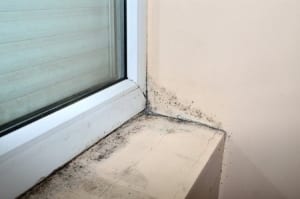Mycotoxin Illness: Could the Air You Breathe Be Making You Sick?
Years ago I had a teen patient who presented with nausea, fatigue, weight loss, and cognitive decline. He was so sick, he was missing weeks of school at a time and could not keep up. After a thorough workup, I tested him for mycotoxins, naturally occurring, poisonous substances that are released by certain types of fungi (aka mold), through a urine test. He had 3 different types of mycotoxins, but the level of one certain type of black mold toxin, called trichothecene, was through the roof. He had been living in the basement of his family home. The home was tested, and mold was found and remediated. Fortunately, I tested several other family members who were all negative.
However, finding and ridding the environment of the mold was not enough to heal my patient. Toxins had settled into his tissues and because his liver genetically was not clearing them help was needed. First, he moved out of the house, left high school temporarily, and moved in with another family member in order to remove himself from the toxic environment completely. I then put him on supplements to support the liver detox process, and binding agents to reduce the toxic load through the gut. I also gave him supplements aimed at lowering inflammation in the brain and nervous system. It took several months, but over time he felt better and was able to move back home to finish school. He is now a healthy, happy young man who just left home for college.
I’m happy to report things ended well for my patient. Unfortunately, this type of case is becoming more common, but why?
About a half-century or so ago we lived and worked in homes and buildings that were more open to outdoor air. Over the years our homes and buildings have become more airtight and climate-controlled so that we are now breathing recirculated indoor air as opposed to outdoor air. In addition, instead of being built with plaster our homes and buildings are constructed with porous drywall which when combined with moisture creates a feeding frenzy for mold.
What are molds?
Molds are a group of fungi that produce airborne spores. In nature, molds are decomposers that recycle nature’s organic wastes. In medicine, they are the producers of antibiotics such as Penicillin or drugs, like ergotamines, used for migraines. Some molds and fungi, like cheese and mushrooms, are delicacies. However, when certain molds infiltrate our environment, they can wreak havoc on our health.

When there is water intrusion in your home or work environment, such as occurs in a flood or even with a minor water leak, within two days mold spores that have either lain dormant or have come from the outside start to feed off the drywall that is now wet. The mold spores produce mold toxins called mycotoxins. Mycotoxins can thrive under the right conditions (high temperatures and moisture are the major determining factors). These wet areas also become breeding grounds for bacteria that produce toxins called endotoxins. The mold and bacteria infiltrate wall coverings, such as wallpaper and paint, and begin to release volatile organic compounds (VOCs), and this contaminated air circulates through the home or building.
Exposure to high concentrations of mold spores (such as black mold toxin or aspergillosis) over an extended period of time which results in the accumulation of these toxins in the body, is known as “biotoxicity” or “neurotoxicity.”
Questions? Give Us a Call!
Symptoms of mold toxicity
The symptoms of toxic inhalation are many. The most common symptoms are respiratory in nature, i.e. sinus congestion, sore throat, cough, wheezing and shortness of breath. This can lead to an autoimmune condition called hypersensitivity pneumonitis. However, with continued exposure, dysregulation of the immune, nervous, and endocrine systems can occur leading to a range of symptoms such as headaches, fatigue, generalized pain, depression, cognitive issues, rashes, weight gain, and digestive inflammation from ingestion of spores.
We now understand that there is genetic variability among those who have been exposed to mycotoxins. Some people are genetically capable of clearing low levels of these toxins through the liver detox process and never suffer consequences. Others do not have the ability to clear them and get severely ill, which was the case for my teen patient. This is why the “sick building syndrome” is so controversial – not everyone has the same reaction depending on the degree of exposure. However, given a high enough dose, it can be devastating. In fact, mycotoxins, like trichothecenes from black mold, have been used in biological warfare.
Mycotoxins in food

Mycotoxins can also be found in food as well as airborne. There are over 300 identified types of mycotoxins, but only a small number of these are responsible for contaminating the foods we eat. Contamination can occur at any number of points in the production process – from harvesting and storage to packaging and transportation. Staple crops like wheat, corn, barley, nuts, even coffee beans, are highly susceptible to contamination. The toxin itself cannot be seen by the naked eye so once the toxin is established in a food item it is virtually impossible to eliminate. Aside from being invisible, they are also heat resistant, so they are not affected when food is cooked.
Ochratoxin and aflatoxin, two common types of mycotoxins found in contaminated food, have been shown to cause kidney damage, cancer, and liver failure.
How we can help | Treating mold toxicity
Determining whether you have been exposed to mold toxins is not an easy task. If you suspect mycotoxin illness, we can help you with the appropriate testing and restore you to good health. The treatment process may include one or more of the options below.
- Get tested: Specialized labs that test for both airborne mold toxins and toxins found in food may be ordered for you.
- Talk to an air quality specialist: We recommend speaking to an indoor air quality specialist. They can come to your home to determine whether mold is present and what steps are necessary to remediate.
- Examine your diet: If exposure appears to be rooted in a food source, such as aflatoxin or ochratoxin, an amylose-free diet (a diet low in sugar, grains, and tubers) may be helpful. Certain nutritional supplements, including Glutathione, N-acetyl Cysteine, Chlorella, Omega-3 Fatty Acids, Vitamin D, Magnesium and D-Ribose, and binding agents like charcoal, clay or bile acid sequestrants like cholestyramine, may be recommended by your physician to help remove toxins from the body.
- Try a complementary therapy: Acupuncture, osteopathic manipulation, and Chinese and American herbal remedies may be helpful in providing relief from symptoms and from any side effects of the detoxification process.
-Lisa Lilienfield, MD
We are here for you, and we want to help.
Our goal is to return you to optimal health as soon as possible. To schedule an appointment please call: 703-532-4892 x2
References
Learn About Hypersensitivity Pneumonitis
Mycotoxins, World Health Organization; Fact Sheet
Immune and Nervous Systems Interaction in Endocrine Disruptors Toxicity: The Case of Atrazine
Impact of Pesticides on Immune-Endocrine Disorders and Its Relationship to Cancer Development.
Impact of mycotoxins on the intestine: are mucus and microbiota new targets?
Facts about Stachybotrys chartarum
Occurrence, Toxicity, and Analysis of Major Mycotoxins
This article was originally published in December 2017. It was reviewed and updated in April, 2024.



